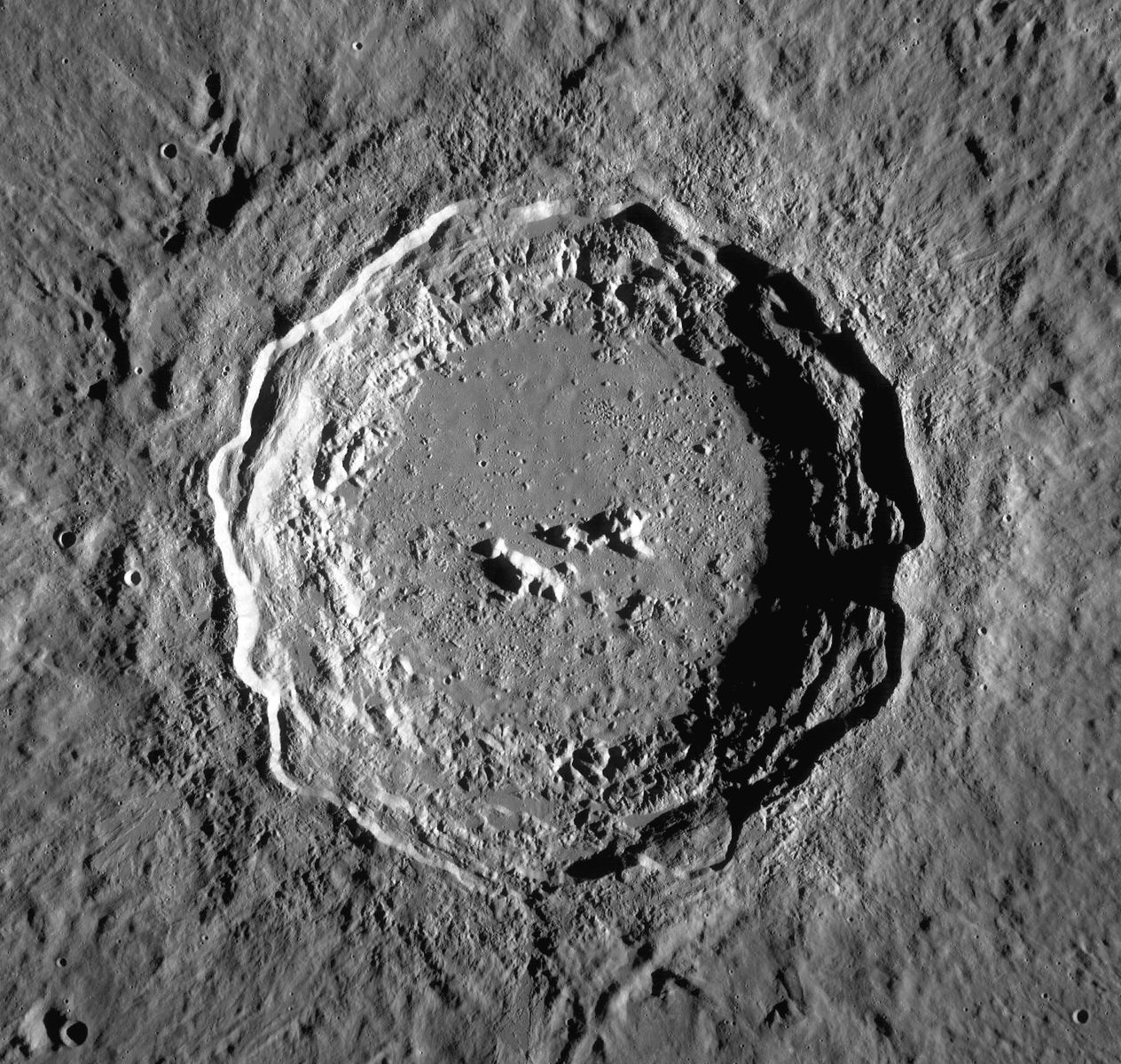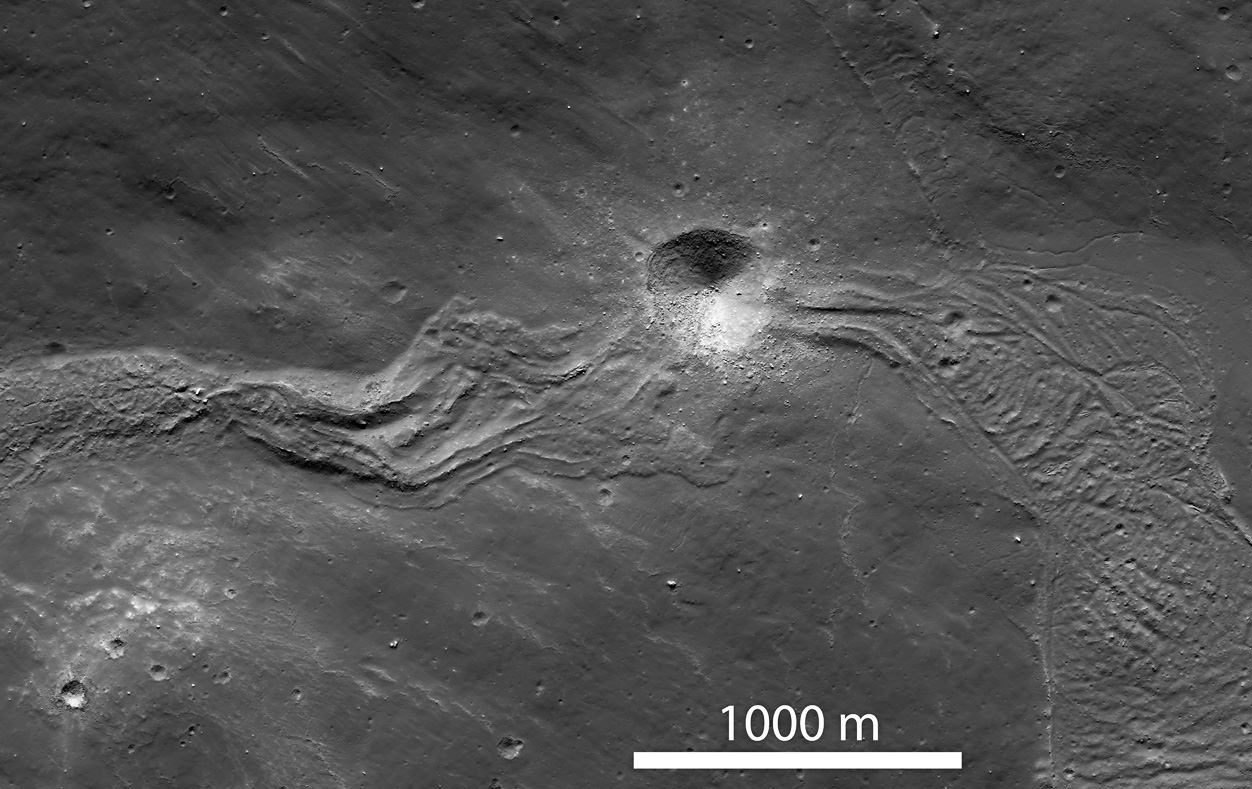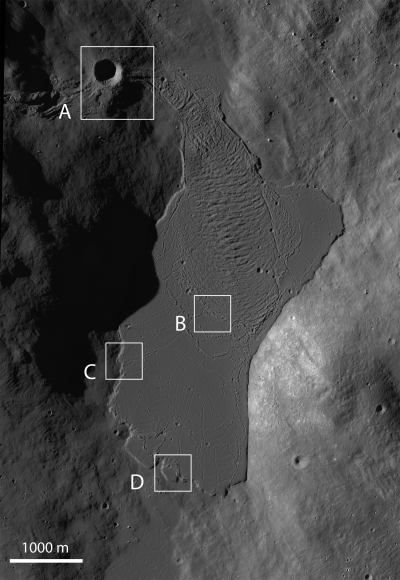In a recent study submitted to Earth and Planetary Astrophysics, a team of researchers from Yale University investigated how to identify impact craters that may have been created by Interstellar Objects (ISOs). This study is intriguing as the examination of ISOs has gained notable interest throughout the scientific community since the discoveries and subsequent research of ‘Oumuamua and Comet 2I/Borisov in 2017 and 2019, respectively. In their paper, the Yale researchers discussed how the volume of impact melt within fixed-diameter craters could be a possible pathway for recognizing ISO craters, as higher velocity impacts produce greater volumes of impact melt.
Continue reading “Impacts From Interstellar Objects Should Leave Very Distinct Craters”Rivers of Rock
The Moon may not have ever had liquid water on its surface — despite the use of the term mare, Latin for “sea” and moniker for the large regions of darker material visible from Earth — but liquid did indeed flow on the Moon in ages past… liquid rock, briefly set loose by the impacts that formed its ubiquitous craters.
When large meteorites impacted the Moon, crust at the site would melt and get flung outwards, flowing downhill as rivers of rock and creating streams and pools of melted material before cooling and solidifying. There the rivers would remain, a permanently-hardened testament to the event that made them.
The image above, part of a NAC scan acquired by NASA’s Lunar Reconnaissance Orbiter on March 9, shows a solidified melt flow dating back to the creation of Tycho crater approximately 108 million years ago –which may sound like a long time but it’s actually very recent for large-scale lunar features.
The flow is interrupted by a younger, 400-meter-wide crater that impacted the lunar surface along its length. Since it punches through the melt flow as well as the local surface, it would be a great place for future astronaut geologists to explore!
Taken under slightly different lighting conditions, the image below shows a large melt pond that the flow above terminates in. The pond is about 4500 meters long by 2100 meters across (2.8 x 1.3 miles).
Such images wouldn’t be possible without the awesome Lunar Reconnaissance Orbiter. Launched on June 18, 2009, LRO explores the lunar surface from an altitude of only 50 km (31 miles). Read more on the LRO site here.
Image credits: NASA/GSFC/Arizona State University



